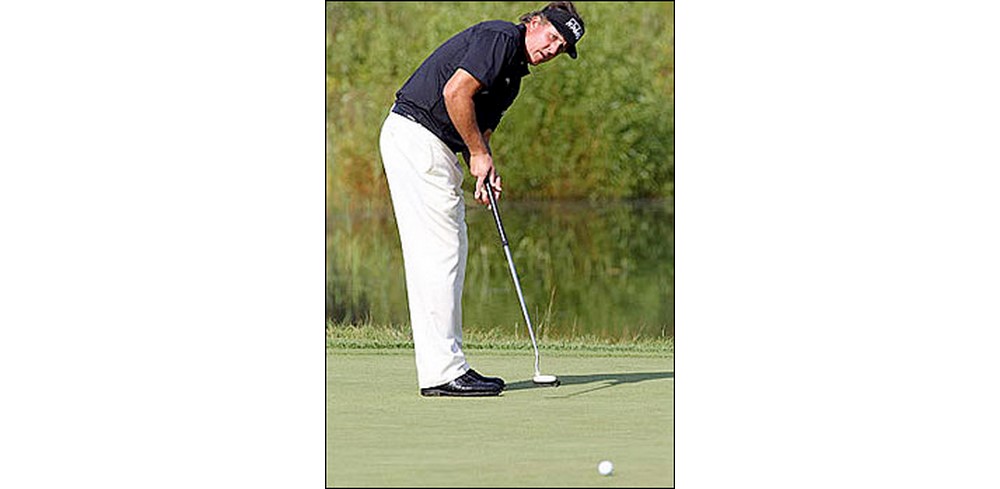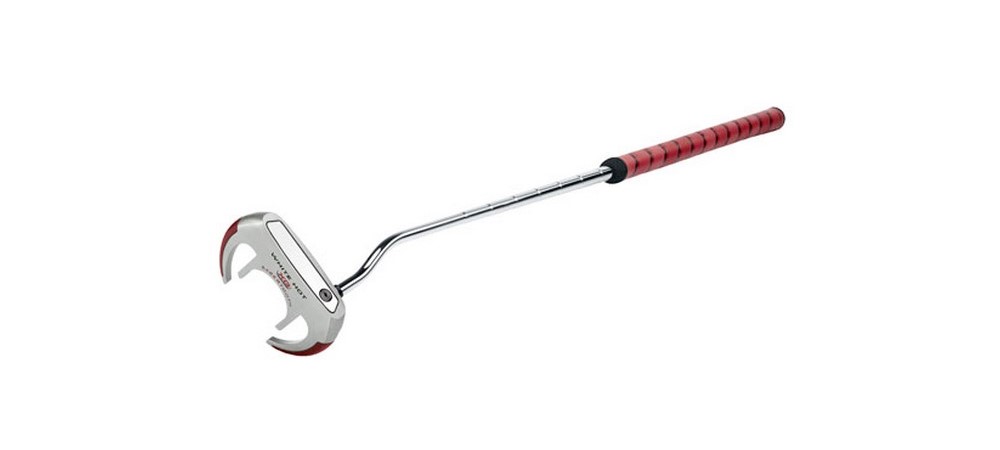Are you a belly putter? There is an alternative if the method gets banned.
by Carly Frost

Last week the R&A announced that the 90-day period for objection to the proposed rule change to ban ‘anchored strokes’ had ended. This means that very soon we will know whether this method of putting will be banned for good, which could be terrible news for golfers who have converted to using a belly-style putter and may struggle to revert. However, Ewan Fallon, author of ‘Plane Golf’ has a solution that can help these golfers, it’s called ‘Putting with your feet’…
A tricky situation resolved?
Up to now it was thought that the controversial ruling about anchored and belly putters had doomed their devotees to extinction, but Ewan Fallon in his Plane Golf has offered them a panacea. For those players and for their fellow suffers with the yips, those forced to the claw, and maybe even the left hand downers, it may prove a saving grace. He calls it “putting with your feet.” He has noted that a long putter can still be used if it eases a physical problem, or nervous twitches, or maybe just as a preferred choice. As long as it is swung and not hinged, it would not violate any potential banning, being in the same category as bracing the shaft along the forearm. He further notes that a long putter may even help to “unitise” the swinging unit, and personal and commercial inventories would be secure.
Putting with the feet

Putting with your feet is so-called because the prime mover is the flexing of the feet. In its simplest form, from a regular putting stance but with a light grip, and the weight evenly distributed, the left heel is lifted pressing down on the left toe. This bends the left knee forward and slightly turns, tilts the hips, and starts the takeaway. During the swing, the head, shoulders, arms, hands, and club remain as a single unit, and all turn as a unit with the hips. In relation to the swing, this unit is passive. The amount of hip turning can determine the putt speed. The forward swing reverses the process, the left heel comes down, and the right heel comes up, turning the hips while bringing the still passive unit to the ball.
To find your personal tempo for any club, hold the club about where the right hand is placed, hold it just between the fingers and thumbs and allow it to swing freely like a pendulum. Swing it back and forward using just the feet as above, to find its natural oscillation. Allow gravity to act on the pendulum club, without applying any other driving force. This then is the tempo of your ideal swing to be duplicated for each putt.
Putting this way takes all the small muscles out of the process, and the need to coordinate them. If the hands or arms yip or twitch it won’t matter. Since there is only one freedom of direction, it would take a concerted effort to get the club off the plane. There is no need to carefully take the club back on a particular line or ruin the putt. The position of elbows, arms and hands is not important as long as they remain as a passive unity during the stroke. The club can be gripped in any fashion for the same reason.
The motion can be best be made as if in a barrel and some movement of the club can be tolerated due to the light grip, which is most important to provide feedback. After impact with the ball the club can be allowed to follow down the putt line, if desired. The longer the backswing the greater speed of the gravity driven club, so there is no need to force the speed with a shorter and quicker swing.

Grip the club with the thumbs and forefingers allowing the club to pivot freely. By moving the feet as shown the club can be induced to move thusly. Since the shaft cannot be levered, gravity controls the speed of the swing. This is the cadence of putting with the feet, and is even maintained during the loose wrist putt. Each putter length, like a pendulum, has a particular cadence. The durance of the knee-bending regulates the length of the arc, and gravity causes the putter speed at impact. For practice, the fingertip hold can be transitioned into the normal grip without breaking the rhythm. A normal but light grip is taken for the actual putt stroke, which is made with the cadence derived from the particular putter being used. The takeaway should feel like the right hand is pulling, and the stroke with the left hand pulling. If desired the club head can be made to follow the target line after contact.
Originally published in 2013
